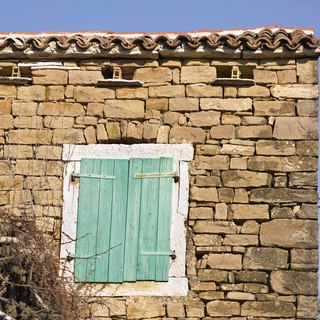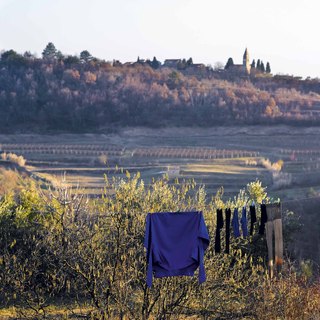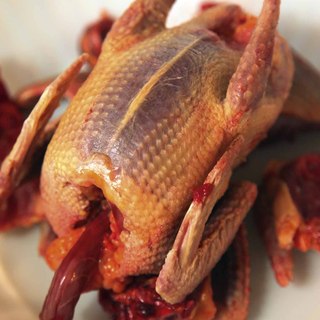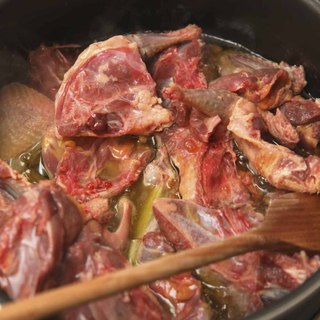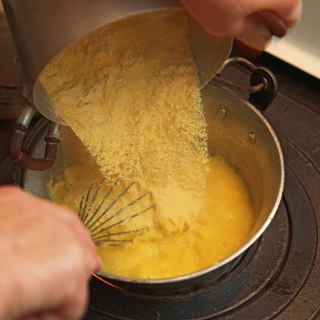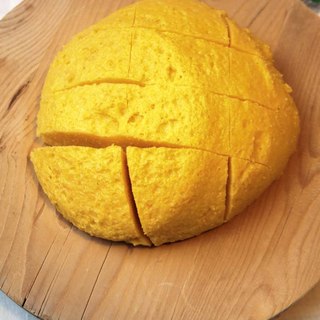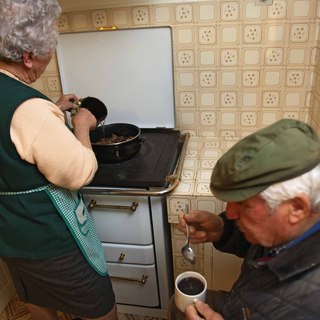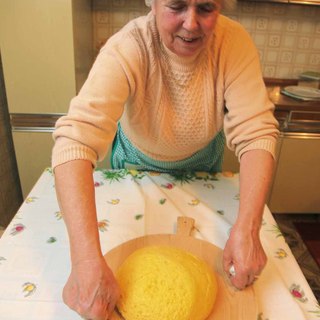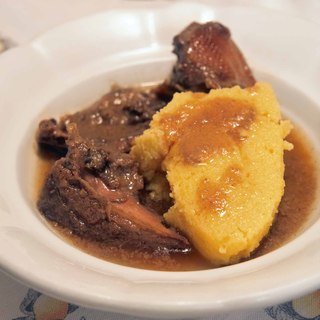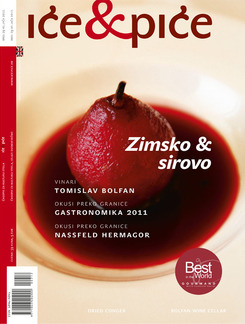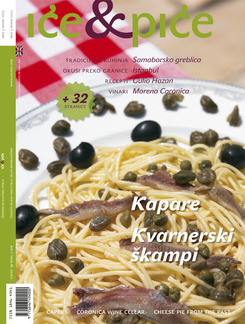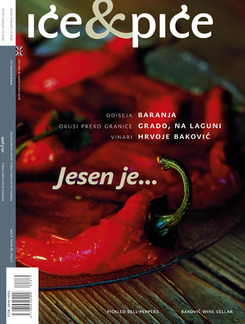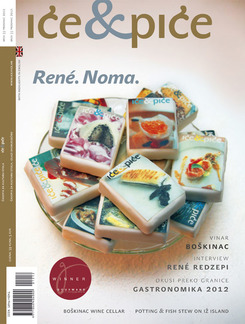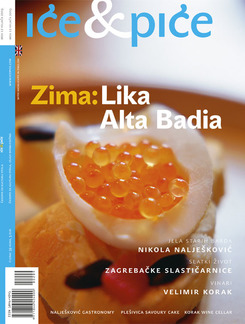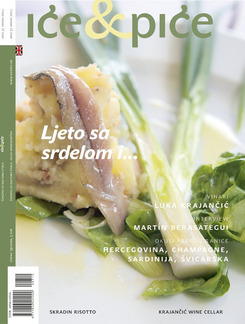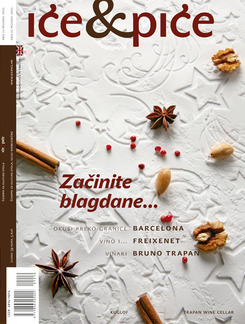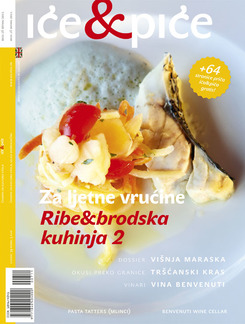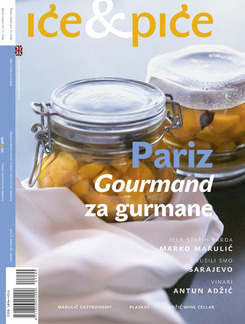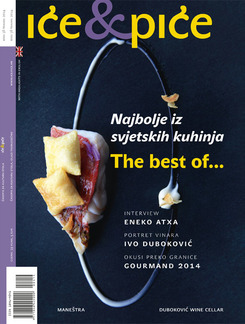Provisions and meals have been together with humanity for hundreds of years while undergoing changes in preparation and use in line with fashion and the tastes of the times. As the manner of life and making a living have changed, so have the basic ways of preparation been modified, and some victuals and dishes have been shifted to the margins of use. In the not so distant past, every household produced or caught what it needed for its food. Quite often, from the villages of Istria one would have to walk a day to barter home products for sugar, salt, paraffin and so on... and the best provisions of all were produced to pay taxes and prepare for wedding feasts. The houses, with their cellars and their attics, their yards with their various outhouses for animals and farm products, the gardens, forests and meadows were the real supermarket of every family.
In the area of Momjan, in the not so distant past, they made dishes of the now protected crayfish from the Argilla brook. That is how it was in Pazin from the Pazinčica, in the Motovun and Oprtalj regions from the Mirna and its tributaries... In the area of Šišanj by Pula, it was most often the kids that would hunt the hedgehogs from the vineyards during the light of the full moon. Most of the hedgehogs caught would be sold in the town, and were cooked in what were called pinjati with potatoes.
Going through the hamlets of Istria you can see regular holes in the cornice of the roofs of the houses and byres and the other outhouses. These are really dovecotes, in which the pigeons were reared. There were also smallish structures put up entirely for dovecots, for example in Bajkini by Vižinada. The tradition of rearing pigeons in Istria was – in the recent past – disseminated over the whole of the peninsula. This is confirmed by the existence of various hamlets named Kolombera (from the Italian or Latin for pigeon – colomba/columba). Although in many villages today there are no more dovecotes, the fifty-year olds vividly recall their existence and the way they ate pigeons. We were in fact quite amazed how many people even today in slightly different dwellings rear pigeons.
It seems that the tradition of keeping and cooking pigeons has been retained most in north west Istria. In Mali Breg in the area of Merišće in the Momjan region we were hosted by Georgina and Fiorentino (Giore) Andreassich. For years they have been the only inhabitants of Mali Breg, and have reared and prepared pigeons as long as they can remember. Fiore Andreassich, in addition to working in his vineyard with a lovely view of Momjan and the castle of the Rota family and other affairs also looks after the pigeons. His wife Giorgina prepared us a dish of pigeons that was once very highly regarded, though the current younger generation looks upon it with a fair amount of suspicion. She recalls with nostalgia the arrival of family and friends from Trieste for whom Colomba con polenta e radicio was a favourite dish. But once upon a time people were de bona boca, i.e. they weren’t picky about their food, says Giorgina.
The pigeons were kept in the dovecotes, and would be taken during darkness through the attic from as Fiore calls it the camera dei colombi. In the traditions of the Egyptians and Sumerians, pigeons were considered sacred animals and messengers of the gods. They also have an important place in Christian iconography. For this reason pigeons are not slaughtered, rather drowned.
Giorgina prepares pigeons in a ragout that’s cooked for at least two hours on a wood stove.
While Giorgina is cooking, Fiore tells us of how they once lived: the importance of and links with the great Istrian cattle, the big slaughterhouse in Momjan, in which there is today a holiday home, the cultivation of the grapevine and the production of wine once and now, hunting, carnival... and in the cellar and the one-time byre shows us the old kitchen tools and other items that are kept as relics of the former way of life.
While Fiore is talking, Giorgina patiently cooks, with the occasional correction of his memory. In a large pot she puts olive oil, a fair amount of onion and a bit of garlic. When the onion goes golden brown she adds the meat of three pigeons. In a separate dish she cooks a rosemary branch in water, which she will later use to pour over the meat. At the end of the cooking salt and pepper are added, and everything is poured with a fair amount of white wine.
Giorgina’s secret is in patient cooking and constant stirring, and in the polenta of homemade corn meal that is carefully prepared over the fire and incessantly stirred for almost an hour. Believe it, we tried, and for this kind of polenta cooking you need a fair amount of physical strength. For our coming, Fiore brought a special board on which polenta is served, that they use only when the family gets together. After it has been placed on the board, it is cut into equal pieces with thread.
When the dish is served and even if you are not de bona boca and have a prejudice about uncommon provisions, you are already so suffused with the traditional Istrian slow food, the taste of homemade Momjan Muscat and the deep warmth of the kitchen that only a wood stove can produce that you will believe all over again that the simplest of foods can be a real gastronomic pleasure.
